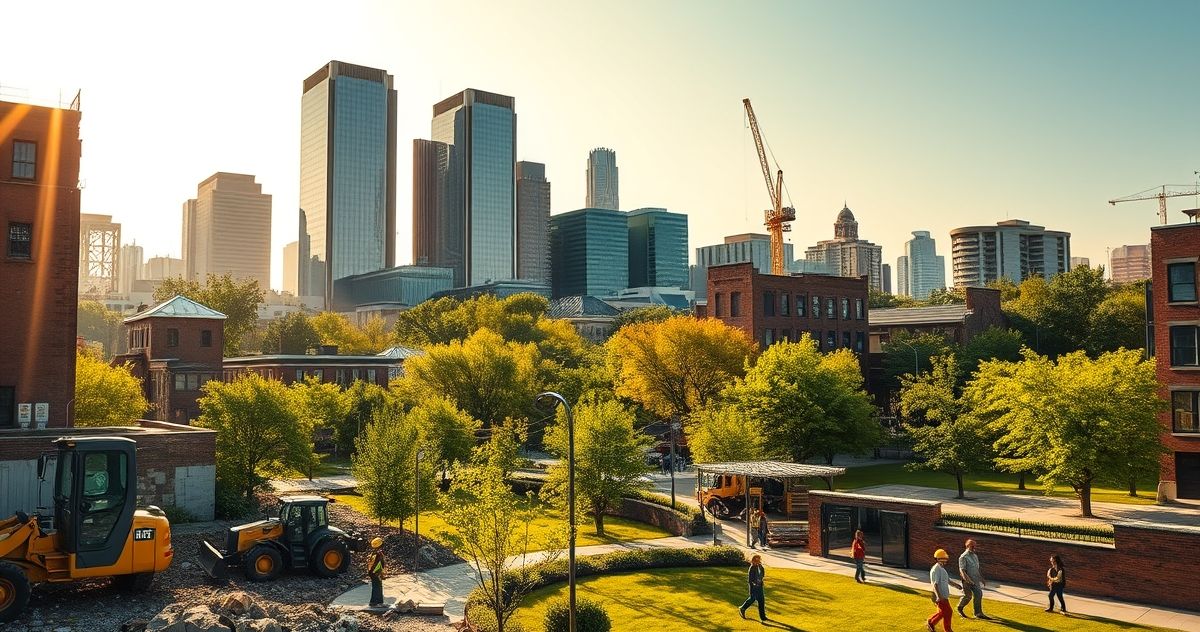Understanding the Brownfield Redevelopment Credit: An In-Depth Guide
The Brownfield Redevelopment Credit is a pivotal financial instrument offered by many governments to inspire the reclamation and redevelopment of brownfield sites—those parcels of land previously used for industrial purposes and possibly contaminated with hazardous waste. This tax credit encourages both economic and environmental improvements, making neglected properties attractive to developers.
What is the Brownfield Redevelopment Credit?
This tax credit provides incentives to businesses and developers who clean up and refurbish brownfield sites, helping to offset the sometimes high costs associated with environmental remediation. This credit can significantly reduce the financial burden of compliance with environmental regulations while stimulating local economic development and encouraging smart growth and sustainable living.
Primary Purpose
The primary purpose of the Brownfield Redevelopment Credit is to mitigate the financial risk and expense linked with brownfield sites’ redevelopment. By offering these tax incentives, governments aim to stimulate investment in these often-overlooked areas, promoting new economic opportunities and residential areas while simultaneously addressing environmental hazards and thus providing broader societal benefits.
Key Features or Components
The Brownfield Redevelopment Credit typically offers several benefits that make it appealing to developers:
- Eligible Expenses: The credit may cover a wide range of expenses associated with the cleanup, including environmental assessments, cleanup costs, demolition, machinery installation, and infrastructure improvements required to redevelop the site.
- Percentage Credit: While rates may vary by jurisdiction, the credit often allows a percentage of qualifying expenses to be claimed against tax liabilities, leading to substantial savings.
- Carryforward Provisions: If the generated credits exceed the tax liability in a given year, some programs allow these to be carried forward for use in subsequent tax years, ensuring the financial incentives fully benefit the developer over time.
Filing or Compliance Requirements
Developers looking to claim the Brownfield Redevelopment Credit must comply with set procedures and requirements, which often include:
- Site Eligibility: A critical step is obtaining confirmation that a particular site is indeed classified as a brownfield. This typically involves environmental assessments and sometimes governmental certification.
- Detailed Documentation: Meticulous records of expenditures, project timelines, and environmental assessments are essential for substantiating the claim and ensuring compliance. Developers must prepare and submit detailed reports to the relevant authorities.
- Application Process: Prior approval is usually needed before starting remediation projects. This may require filing initial project plans, securing necessary permits, and gaining approvals to qualify for the credit program.
- Compliance Checks: Developers are often required to document compliance with environmental standards, showing that the remediation meets the required safety and health standards.
Penalties or Consequences for Non-Compliance
Non-compliance in the context of the Brownfield Redevelopment Credit may have several potential consequences:
- Ineligibility of Credit: Failure to meet the specific requirements could lead to the rejection of the credit claim, impacting the project’s financial viability.
- Reimbursement Obligations: Companies may be required to repay claimed credits if audits reveal deficiencies or false claims in documentation or project execution.
- Legal and Financial Penalties: Additional fines or legal actions can be imposed on developers who disregard compliance regulations, notably when safety standards are compromised during the remediation process.
Importance or Significance
The Brownfield Redevelopment Credit plays an instrumental role in facilitating sustainable urban development and renewal. By financially empowering investors and developers to tackle sites that may otherwise be financially unappealing, this credit helps to transform dilapidated or hazardous urban landscapes into vibrant communities. By doing so, it not only advances economic goals but also contributes significantly to public health improvements and environmental protection. The reclamation of these sites helps reduce urban sprawl, preserve open spaces, and stimulate economic investment into regions that have been left dormant.
In summary, the Brownfield Redevelopment Credit is a substantial financial motivator that assists in overcoming the financial challenges of transforming contaminated properties into productive assets. Its effective implementation leads to thriving communities and healthier environments, making it a crucial element in modern urban planning and economic redevelopment strategies.

